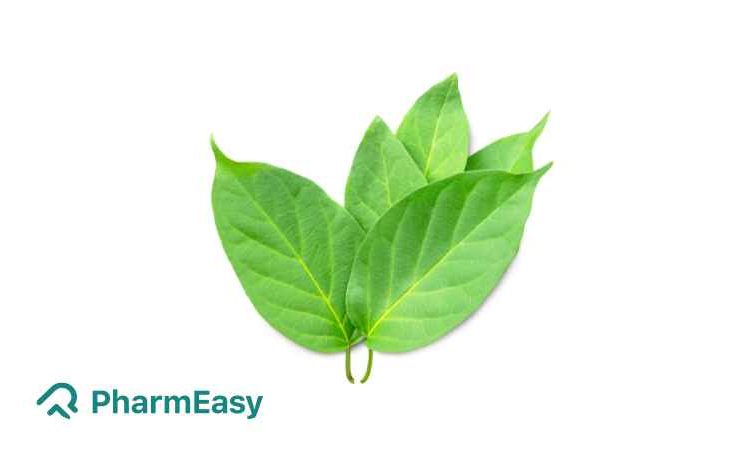Madhunashini (Gymnema Sylvestre): Uses, Benefits and Side Effects By Dr. Smita Barode
By Dr Smita Barode +2 more

Get,

to manage your symptom
Get your,


4 Cr+ families
benefitted

OTP sent to 9988776655



You’ve successfully subscribed to receive
doctor-approved tips on
Whatsapp

Get ready to feel your best.

Hi There,
Download the PharmEasy App now!!


Register to Avail the Offer
Send OTPBy continuing, you agree with our Privacy Policy and Terms and Conditions

Hi There,
Sign up on PharmEasy now!!
Trusted by 4 crore+ families

OTP sent to 9988776655



You have unlocked 25% off on medicines




Code: NU25
By Dr Smita Barode +2 more
Table of Contents
“Ayurveda, a most sacred science of life, is beneficial to humans both in this world and the world beyond”. Ayurveda focuses on improving human health and well-being through herbs and spices. One such herb which is of great significance is Madhunashini. Madhunashini is also known as meshashringi (Sanskrit), gurmar and merasingi (Hindi), vakundi, kavuli and kalikardori (Marathi), dhuleti and mardashingi (Gujarathi), Podapatri (Telugu) and Cherukurinja (Tamil). The scientific or botanical name of Madhunashini is Gymnema sylvestre and it belongs to the Asclepiadaceae family. It is a medicinal woody climber native to western and Central India, Australia, and tropical Africa. In India, it is widely grown in Bihar, Chhattisgarh Andhra Pradesh, Kerala, Karnataka, Uttar Pradesh, Madhya Pradesh, and West Bengal. The leaves, flowers, and root extracts have medicinal properties. Let us know more about the health benefits of this wonder plant1,2.

Madhunashini has nutrients like carbohydrates, proteins, and other phytochemical constituents like saponins, sterols, terpenoids, glycosides, alkaloids, resins, etc3.
Did you know?
Scientifically proven properties of Madhunashini include1:
Based on my experience, I have found that the leaf extract of madhunashini might have antiarthritic effects. The extract contains certain compounds that could potentially inhibit inflammation and reduce the release of pain-causing substances, which may help in managing arthritic symptoms8.
Dr. Siddharth Gupta, B.A.M.S, M.D (Ayu)
Some of the potential benefits of Madhunashini are described as under:

We can’t deny that diabetes is one of the most common diseases, showing an increasing trend worldwide. Even in their 20s, youngsters have complaints of high blood glucose levels because of unhealthy dietary choices and a sedentary lifestyle. A review1 by Kanetkar et al. in 2007 stated that Madhunashini exerts anti-diabetic effects due to the presence of gymnemic acids. The possible mechanism attributed is an increase in insulin secretion, a hormone that regulates blood glucose. Additionally, gymnemic acids help inhibit glucose absorption from the intestine and increase glucose utilization. This indicates that Madhunashini may help manage diabetes. However, more studies are needed to support these claims with greater reliability1.

A lipid profile is a blood test that measures the number of triglycerides and cholesterol in the blood. An altered lipid profile is a risk factor for diseases like atherosclerosis, pancreatitis, etc. Eisenberg et al. 2003 conducted a study8 in rats. This study showed that Madhunashini leaf extracts could reduce serum triglycerides, low-density lipoprotein, total cholesterol, etc. This indicates that Madhunashini has the potential to correct an abnormal lipid profile. However, these results are based on animal studies and more studies are needed to claim these effects in humans4.

Obesity is a complex disease characterized by excess body fat, which can negatively affect health. Studies have supported the fact that using food sources in the right quantity and the use of complementary and alternative medicine like yoga and ayurvedic herbs may help in weight loss. A review4 conducted by Fabio et al. in 2013 stated that Madhunashini has the potential to manage obesity. This effect is attributed to inhibiting taste perception by gymnemic acids present in Madhunashini leaf and root extracts which may limit your food intake. This indicates that the Madhunashini may aid weight loss by decreasing the intake of calories. However, we need more studies to support these claims with greater reliability4,5.

Cancer is a disease in which cells of the body may multiply abnormally and form cancerous cells that may spread to other parts of the body. A review4 conducted by Fabio et al. in 2013 states that Madhunashini may help manage breast and lung cancer. The exact mechanism behind this effect is, however, still being determined. This indicates that Madhunashini may help with cancer. However, scientific evidence supporting these claims is limited. Therefore, we need more studies to support these claims4.

Many antibacterial agents in Ayurveda have been used for managing bacterial infections; one such agent is Madhunashini. A review4 conducted by Fabio et al. in 2013 stated that Madhunashini leaf extract might have antibacterial activity against bacteria like E.coli and Salmonella species. By killing these bacteria, Madhunashini may help manage urinary tract infections, diarrhoea, typhoid, etc. This indicates that it may help manage a wide range of bacterial infections. Additionally, it may also help in managing dental caries, usually caused by bacteria, and thus may help improve dental hygiene. However, there is no scientific study done on humans to support these claims4.

Though there are studies that show the benefits of Madhunashini in various conditions, these are insufficient, and there is a need for further studies to establish the true extent of the benefits of Madhunashini on human health.
In my experience, madhunashini extract may have potential benefits in wound healing. The extract contains flavonoids, which are known for their antioxidant properties. While further studies are needed, incorporating its extract in wound care may support the healing process8.
Dr. Rajeev Singh, BAMS
You must consult a qualified doctor before taking any herbal supplements. Do not discontinue or replace an ongoing treatment of modern medicine with an ayurvedic/herbal preparation without consulting a qualified doctor.
Did you know that the root bark of Madhunashini has been historically used as an emetic, expectorant, and analgesic for body aches? It has also been utilized as a traditional remedy for snakebites, with the root juice playing a role in its treatment8.
Dr. Smita Barode, B.A.M.S, M.S.
However, if you experience any adverse reactions to Madhunashini, it is advised to discontinue its intake and immediately contact a doctor or your Ayurvedic physician who has prescribed it. They will be able to guide you appropriately for your symptoms.
Also Read: Gokshuradi Guggulu: Uses, Benefits, Side Effects and more!
Consuming Madhunashini is okay if taken in moderate amounts. However, general precautions must be followed in the following conditions7:
Also Read: Vasaka (Malabar Nut): Uses, Benefits and Side Effects by Dr. Rajeev Singh
However, you must always seek the advice of your Ayurvedic physician about the possible interaction of Madhunashini with other drugs and follow the prescription thoroughly, as they will know your health condition and other medications you are taking7.
Also Read: Triphala: Uses, Benefits, Side Effects & More!
Madhunashini is also known as meshashringi (Sanskrit), gurmar and merasingi (Hindi), vakundi, kavuli and kalikardori (Marathi), dhuleti and mardashingi (Gujarathi), Podapatri (Telugu) and Cherukurinja (Tamil)1.
The scientific name of the Madhunashini plant is Gymnema sylvestre, which belongs to the Asclepiadaceae family1.
No, there are no interactions of Madhunashini with food7.
Yes, it is available in the market as Madhunashini tablet, capsules, extract, powder, paste, etc6.
Madhunashini in Tamil is known as Cherukurinja1.
Disclaimer: The information provided here is for educational/awareness purposes only and is not intended to be a substitute for medical treatment by a healthcare professional and should not be relied upon to diagnose or treat any medical condition. The reader should consult a registered medical practitioner to determine the appropriateness of the information and before consuming any medication. PharmEasy does not provide any guarantee or warranty (express or implied) regarding the accuracy, adequacy, completeness, legality, reliability or usefulness of the information; and disclaims any liability arising thereof.
Links and product recommendations in the information provided here are advertisements of third-party products available on the website. PharmEasy does not make any representation on the accuracy or suitability of such products/services. Advertisements do not influence the editorial decisions or content. The information in this blog is subject to change without notice. The authors and administrators reserve the right to modify, add, or remove content without notification. It is your responsibility to review this disclaimer regularly for any changes.
Comments

Leave your comment...
You may also like
Comments